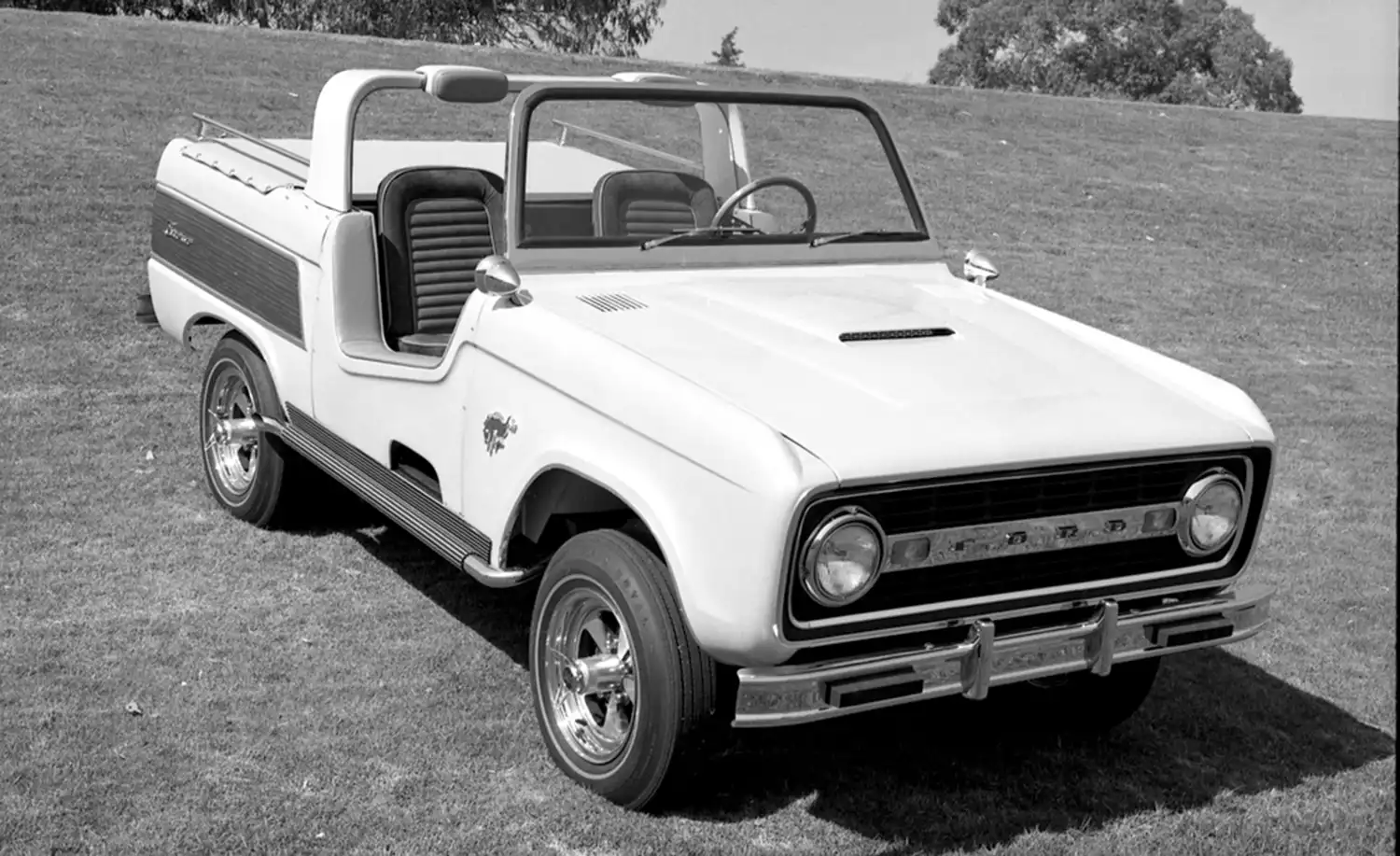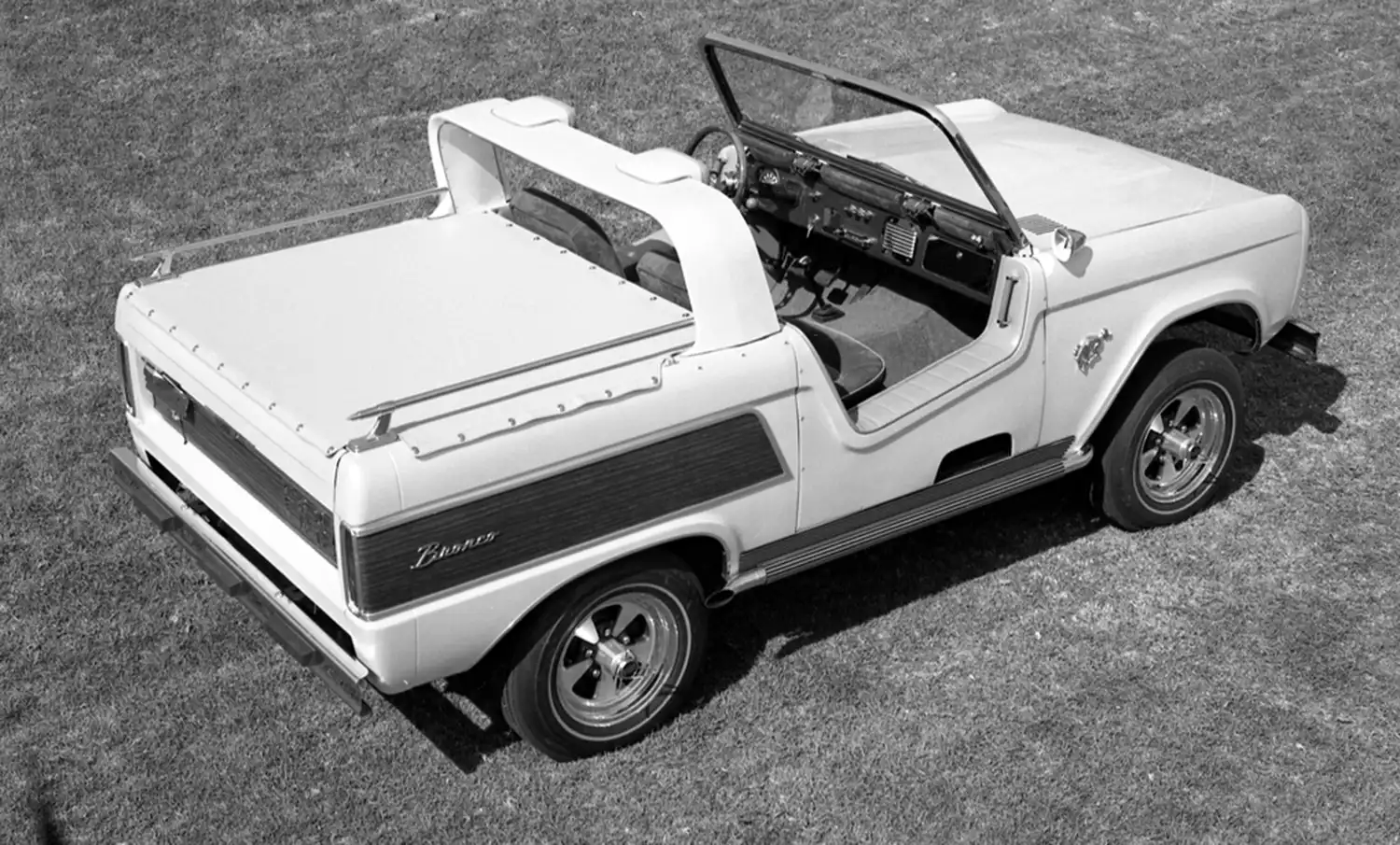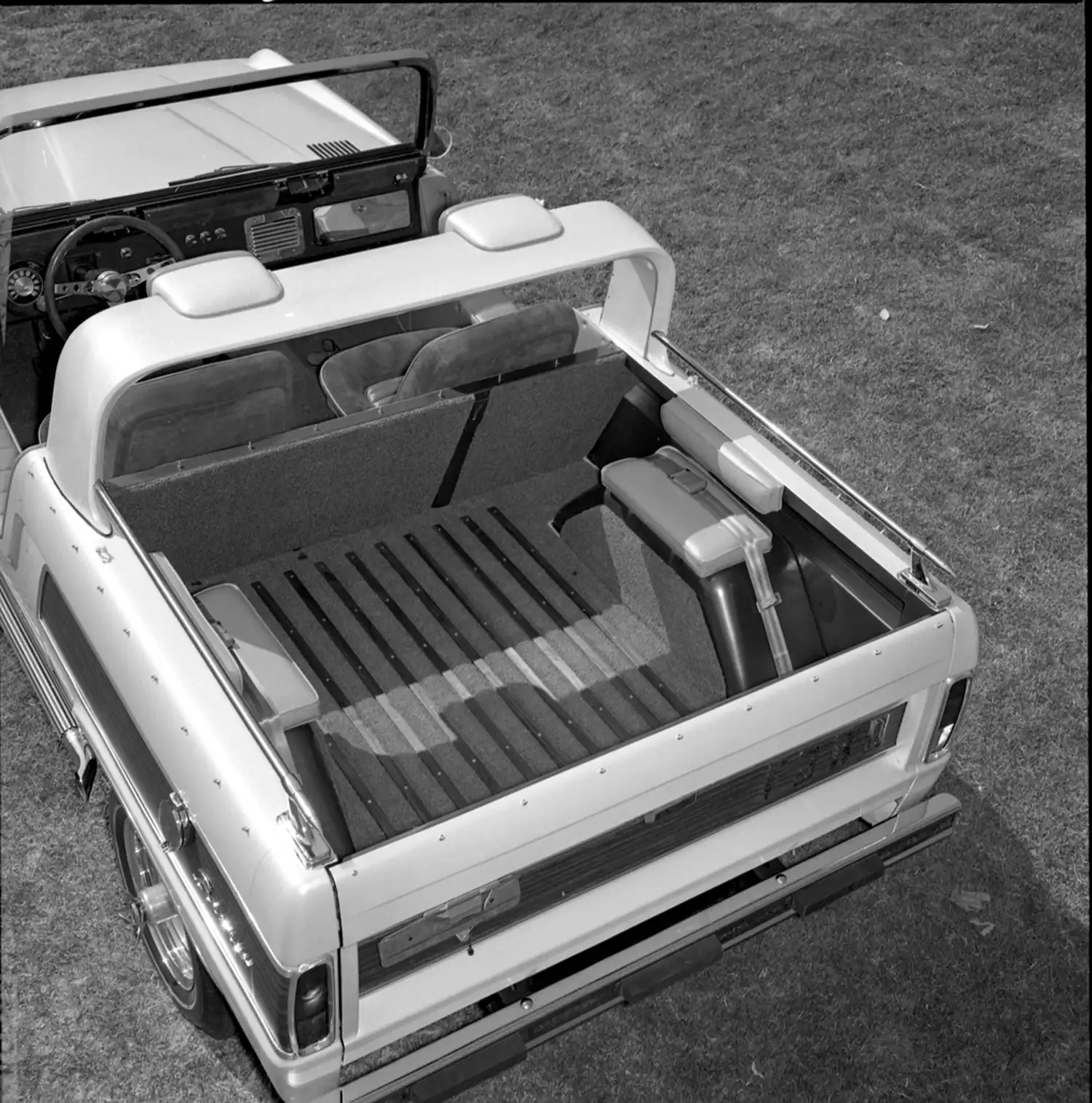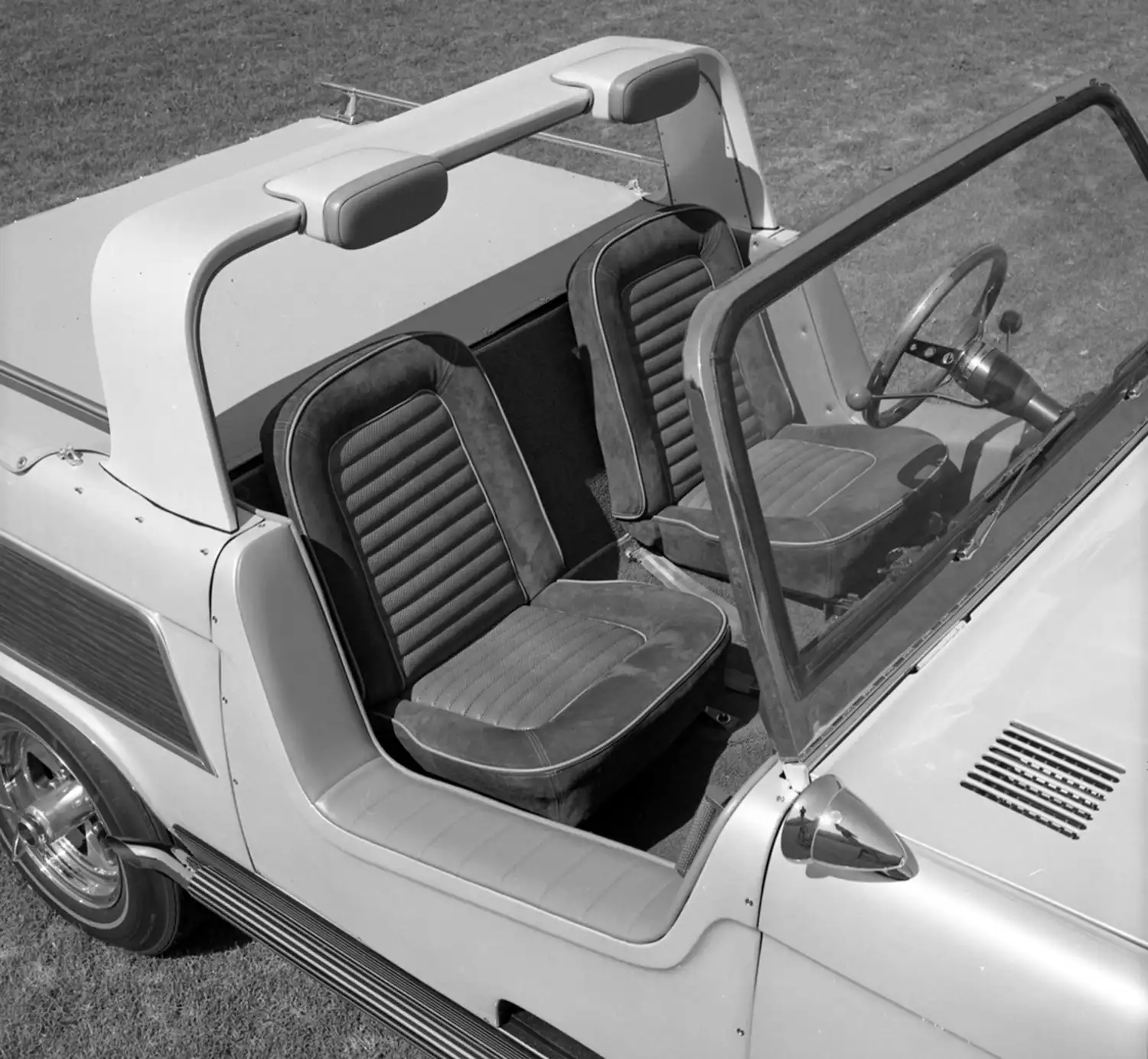
The Ford Bronco, an iconic nameplate in the world of off-road vehicles, first burst onto the scene in 1965 for the 1966 model year. Conceived as a compact and rugged 4×4, it quickly established itself as a capable and versatile machine. However, alongside the production models, Ford also explored more specialized versions, one of the most intriguing being the 1966 Ford Bronco Dune Duster concept. This vehicle represented an early vision for a high-performance, desert-oriented iteration of the Bronco, showcasing Ford’s forward-thinking approach to the burgeoning off-road recreation market. While the Dune Duster itself never reached production, its spirit and some of its design elements hinted at future directions for the Bronco and the broader off-road vehicle segment.
Design and Features of the Dune Duster Concept: The 1966 Ford Bronco Dune Duster concept took the basic architecture of the early Bronco and infused it with a more aggressive and sporting character. Visually, it differed significantly from the standard models. It featured a distinctive open-top design, emphasizing its recreational intent and connection with the outdoors. A prominent roll bar was integrated into the design, not only for safety but also contributing to its rugged aesthetic. The bodywork incorporated modifications aimed at enhancing its off-road capabilities and desert prowess. These likely included increased ground clearance, possibly through a lifted suspension, and perhaps wider fender flares to accommodate larger, more aggressive tires suited for loose terrain like sand dunes. Details regarding the specific materials and construction of the body panels are scarce, but the focus was undoubtedly on creating a lightweight yet durable vehicle capable of handling demanding off-road conditions. The interior of the Dune Duster concept was likely designed with a focus on functionality and a sporty feel. Bucket seats would have been a natural choice to provide better support during off-road excursions. Instrumentation would have likely included essential gauges for monitoring engine performance and vehicle status, possibly with a more performance-oriented design compared to the standard Bronco. Given its concept nature, it might have also featured unique trim elements or materials to further differentiate it.

Powertrain and Performance Aspirations: Engine and Performance: Specific details about the exact engine fitted to the 1966 Ford Bronco Dune Duster concept are somewhat limited in publicly available information. However, it is highly probable that Ford would have considered a more powerful engine option than the base offerings for the standard Bronco at the time. The production 1966 Bronco was initially available with a 170 cubic inch inline-six engine producing around 105 horsepower, and later a 289 cubic inch V8 became an option. For a high-performance concept like the Dune Duster, it is plausible that Ford envisioned utilizing a more potent version of their small-block V8 engine, potentially a modified 289 or even a larger displacement V8, to provide the necessary power and torque for tackling challenging off-road terrain and sand dunes. The transmission would have likely been a robust manual gearbox, possibly with a lower gearing ratio to aid in off-road crawling and provide strong acceleration. Given its intended purpose, a four-wheel-drive system with a transfer case offering high and low ranges would have been a fundamental feature, ensuring optimal traction in various off-road environments. The performance targets for the Dune Duster would have centered around off-road agility, strong acceleration, and the ability to confidently navigate sand dunes and other challenging landscapes.

The Dune Duster’s Place in Bronco History: Although the 1966 Ford Bronco Dune Duster concept never made it to production, it remains a significant footnote in the history of the Ford Bronco. It demonstrated Ford’s early understanding of the potential for a more specialized, high-performance off-road vehicle, catering to a growing recreational market. The ideas explored in the Dune Duster concept, such as an open-top design, enhanced off-road capabilities, and a focus on performance, likely influenced future developments within the Bronco lineup and potentially even other Ford off-road vehicles. It serves as a reminder of the creative exploration and innovative thinking that often occurs behind the scenes in the automotive industry, with concept vehicles providing a glimpse into what might have been and sometimes paving the way for future production models. The Dune Duster represents an early step in the evolution of the Bronco beyond its initial utilitarian focus, hinting at the more performance-oriented and specialized off-road vehicles that would become popular in later decades. Its existence underscores the enduring appeal and versatility of the Bronco platform, even in its earliest iterations.
Why the Dune Duster Remained a Concept: The reasons why the 1966 Ford Bronco Dune Duster never progressed beyond the concept stage are not definitively documented, but several factors likely played a role. At the time, the market for high-performance off-road recreational vehicles was still in its early stages of development. Ford’s primary focus would have been on establishing the standard Bronco as a successful and versatile vehicle for a broader audience. The costs associated with developing and producing a specialized, performance-oriented model like the Dune Duster might have been deemed too high given the uncertain market demand. Additionally, Ford may have had other product development priorities at the time. Concept vehicles often serve as exploratory exercises, allowing manufacturers to gauge public reaction, test new ideas, and potentially incorporate successful elements into future production models. The Dune Duster likely served this purpose, even if it didn’t directly lead to a production version. It provided valuable insights into the potential of the Bronco platform and the evolving desires of off-road enthusiasts.

Legacy of the Unreleased Wild Horse: Despite its lack of production, the 1966 Ford Bronco Dune Duster concept holds a unique place in the Bronco’s history. It represents a bold and early vision for a more extreme and performance-focused version of a vehicle that would go on to become a true icon. Its spirit of off-road adventure and high-performance capability can be seen as a precursor to later, more specialized off-road vehicles and the enduring popularity of performance-oriented SUVs and trucks. The Dune Duster remains a fascinating “what if,” a tantalizing glimpse into an alternative path for the early Bronco and a testament to Ford’s innovative spirit in exploring the boundaries of off-road vehicle design and capability. It reminds enthusiasts that even unreleased concepts can contribute to the ongoing story and legend of an automotive icon.
Summary:
- The 1966 Ford Bronco Dune Duster was a high-performance off-road concept.
- It featured an open-top design and a prominent roll bar.
- It likely had increased ground clearance and wider tires.
- A more powerful V8 engine was probable for enhanced performance.
- It showcased Ford’s early vision for a specialized off-road Bronco.
- The Dune Duster never reached production.
- It hinted at future performance-oriented off-road vehicles.
- It remains a significant concept in Bronco history.
- It demonstrated Ford’s exploration of the off-road recreation market.
- Its design elements may have influenced later Bronco developments.
Disclaimer: Information provided about the 1966 Ford Bronco Dune Duster concept is based on available historical details and interpretations. Specific specifications and production decisions may not be definitively known.
Source: Ford Heritage Vault
AI Assistance: Gemini
